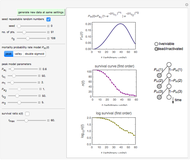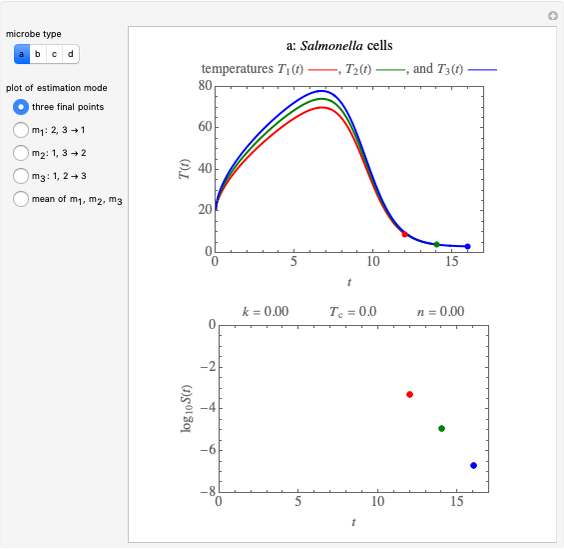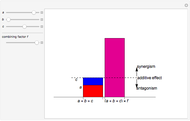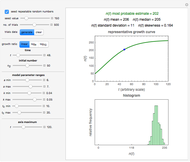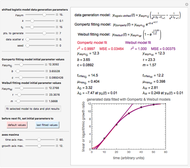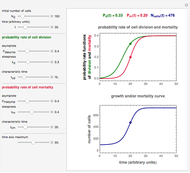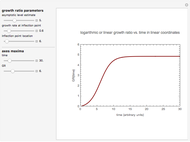Growth Inhibition and Retardation by Antimicrobials

Requires a Wolfram Notebook System
Interact on desktop, mobile and cloud with the free Wolfram Player or other Wolfram Language products.
Depending on the medium, concentration, and conditions such as temperature and pH, a chemical antimicrobial can decimate a targeted organism's population, delay its growth onset, or suppress its growth level. This Demonstration simulates these antimicrobial activity modes (and transitions between them) by a single phenomenological model. It is based on the assumption that the momentary growth or survival ratio is regulated by two competing global mechanisms having different characteristic times.
Contributed by: Mark D. Normand and Micha Peleg (November 2014)
Based on a suggestion from: Jochen Weiss
Open content licensed under CC BY-NC-SA
Snapshots
Details
Snapshot 1: pure growth
Snapshot 2: suppressed growth followed by inactivation
Snapshot 3: incomplete inactivation followed by suppressed growth
Snapshot 4: pure inactivation
A microbial population in a nutritious medium such as food tends to grow through cell division. A typical sigmoid growth curve of a microbe in a closed habitat is a reflection of four phases: a lag phase where the population's size remains small and unchanged, followed by an exponential growth phase that turns into a stationary phase, after which decline and mortality ensue. Almost always, only the first two or three phases are of consequence to food safety and stability. An introduced chemical antimicrobial can affect the cycle in different ways, qualitatively and quantitatively. Depending on its concentration and other conditions, the antimicrobial agent can be lethal from the start, turning the growth curve into an inactivation (survival) curve, or it can retard the exponential growth phase, suppress the overall growth level, lower the growth rate, or any combination of those. These growth/inactivation patterns suggest that the momentary population size is determined by a changing balance between two conflicting mechanisms: the agent's deleterious activity and the organism's attempt to survive and grow.
This can be described mathematically, at least qualitatively, by the following argument. Define the growth/inactivation state by the linear or logarithmic ratios  or
or  , respectively, where
, respectively, where  is the initial and
is the initial and  is the momentary number of cells. At
is the momentary number of cells. At  ,
,  . Net growth is manifested when
. Net growth is manifested when  and inactivation when
and inactivation when  . We can express this ratio's time dependence by the double stretched exponential model
. We can express this ratio's time dependence by the double stretched exponential model  , where the first term represents the lethal/suppressive effect and the second term represents the cell's tendency to divide. The
, where the first term represents the lethal/suppressive effect and the second term represents the cell's tendency to divide. The  are scale factors, the
are scale factors, the  are the two mechanisms' characteristic times, and the
are the two mechanisms' characteristic times, and the  are shape factors that you can enter and vary with sliders.
are shape factors that you can enter and vary with sliders.
Using the six parameters' values and also those of the axes maxima, the corresponding  curve is plotted. It is green when
curve is plotted. It is green when  is positive and red when negative. The numerical momentary value of
is positive and red when negative. The numerical momentary value of  , marked as a moving dot on the curve controlled by the
, marked as a moving dot on the curve controlled by the  slider, is displayed above the plot.
slider, is displayed above the plot.
Permanent Citation






